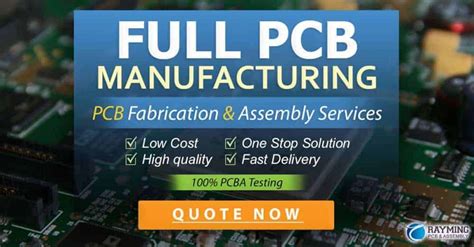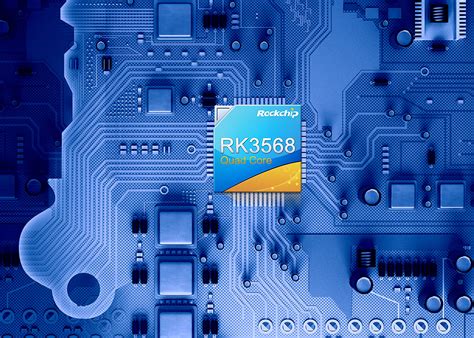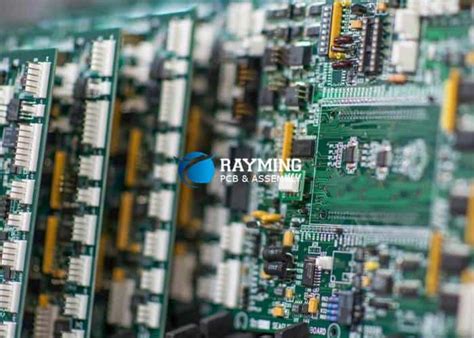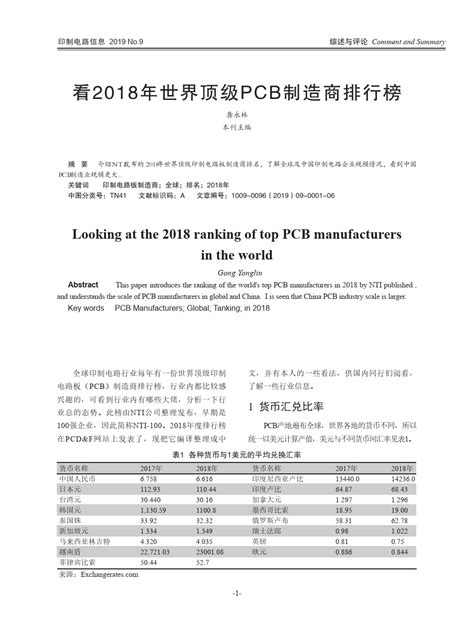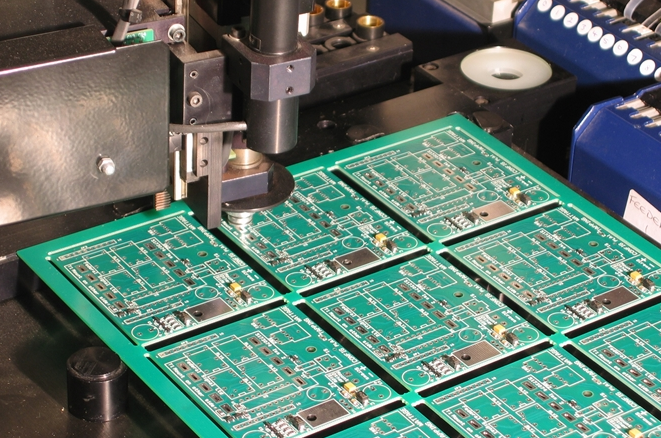Mastering Altium: Streamlined Multi Board Assembly Techniques
Key Takeaways
The journey towards mastering Altium for multi board assembly (MBA) is marked by the understanding and application of several essential concepts. Utilizing effective pcb assembly techniques ensures that each printed circuit board (PCB) operates cohesively within the larger design framework. PCBA processes often involve intricate steps that can significantly impact overall performance and functionality. One of the primary advantages of embracing a streamlined approach is the enhancement of design efficiency, which translates into faster project timelines and reduced costs. Furthermore, tackling the inherent challenges of integrating multiple PCBs requires innovative solutions, including thoughtful planning and leveraging advanced features within Altium. By adopting these best practices, professionals can optimize their workflows, resulting in a more productive environment conducive to collaboration and agility in addressing project demands. The growing significance of these practices is underscored by numerous case studies showcasing successful MBA projects, highlighting both the challenges faced and the strategic solutions implemented. Emphasizing continued learning and adaptation will ultimately guide engineers in keeping pace with future trends in multi board assembly design, paving the way for innovation in their respective fields.
Introduction to Altium and Multi Board Assembly
In an increasingly connected world, the need for efficient PCB assembly is paramount. With Altium as a leading design software, mastering its capabilities can significantly enhance your workflow in multi board assembly (MBA). The integration of several printed circuit boards (PCBs) into a single cohesive unit poses numerous challenges, but with Altium, designers can tackle these challenges effectively.
Understanding the basics of both the software and the multi board assembly process is crucial for optimizing productivity. The versatility of Altium allows for greater customization throughout the design phases, providing tools that ensure precision in layouts and interconnections between boards. This streamlined approach not only improves design efficiency but also facilitates enhanced communication amongst team members.
Consider utilizing features such as real-time collaboration to keep your design efforts synchronized. “Effective communication is key in multi board projects,” explains industry expert Jack Simmons. “> By leveraging tools like Altium’s integrated cloud functionalities, teams can work together seamlessly regardless of their physical locations.”
Here’s a brief overview of the essential aspects involved in mastering Altium for MBA:
| Feature | Benefits |
|---|---|
| Real-time Collaboration | Improved teamwork and project updates |
| Advanced Design Rules | Minimization of errors and reworks |
| Integrated Simulation Tools | Validation before production |
By focusing on these elements, users can expect a smoother transition during the assembly process, ensuring that each aspect of PCBA is addressed comprehensively. Embracing these techniques will not only facilitate seamless integration across multiple PCBs but will also enhance overall project success.
Key Benefits of Streamlined Multi Board Assembly
Streamlined multi board assembly brings several key benefits that significantly enhance the efficiency of PCB assembly processes. By integrating multiple printed circuit boards (PCBs) into a cohesive design workflow, engineers can reduce time spent on repetitive tasks and minimize errors. One of the most notable advantages is the ability to manage complex projects with greater ease, allowing for enhanced collaboration among teams. The streamlined approach fosters better communication, ensuring that all stakeholders are aligned on design specifications and modifications in real-time. Additionally, optimizing the pcba process leads to cost savings, as it reduces material waste and promotes efficient resource allocation. Increased design flexibility emerges as another benefit, enabling engineers to adapt quickly to changes in project requirements without having to revisit the entire setup from scratch. Ultimately, organizations that embrace streamlined multi board assembly techniques not only enhance their productivity but also gain a competitive edge in bringing their products to market more efficiently.
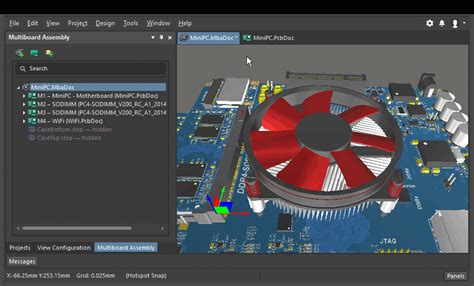
Essential Techniques for Efficient PCB Design
To achieve optimal PCB assembly outcomes, it’s crucial to implement effective techniques during the design phase. Streamlined multi board assembly not only enhances productivity but also minimizes potential errors throughout the lifecycle of the printed circuit boards (PCBs). One essential technique involves creating a thorough system design that emphasizes the interconnections and functionality between different PCBs. By leveraging Altium’s advanced routing tools, designers can ensure that traces are optimally laid out, which improves both signal integrity and manufacturing efficiency. Implementing hierarchical schematics allows for clearer management of large designs, simplifying the layout and assembly processes.
Furthermore, maintaining a robust library management system is vital. A well-organized library that includes all necessary components ensures consistency across projects and reduces the risk of duplications or errors during PCBA. Additionally, utilizing design rules checking (DRC) features in Altium can help catch potential issues early in the design process, saving time and resources later on. Moreover, incorporating simulation tools allows for real-time analysis of performance before physical prototypes are produced. This proactive approach facilitates better decision-making and enhances collaboration among team members, making it easier to tackle complex design challenges effectively.
In summary, integrating these essential techniques not only streamlines PCB assembly but also fosters an environment conducive to innovation and efficiency within multi board projects.
Integrating Multiple PCBs: Challenges and Solutions
When working on multi board assembly (MBA) projects, integrating multiple PCBs often presents a unique set of challenges that can hinder the design and manufacturing processes. One significant challenge is ensuring that all PCBs communicate effectively with each other, which often depends on the complexity of the electronic components and their corresponding layout. Achieving seamless integration requires careful planning and precise alignment of the electrical interfaces. Another hurdle lies in managing variations in design changes across multiple boards simultaneously; if one board undergoes an alteration, it can impact the performance and compatibility of the entire assembly. To address these issues, utilizing advanced design tools within Altium can greatly simplify pcba processes. Features such as real-time collaboration allow team members to visualize changes instantly, reducing the likelihood of errors during integration. Moreover, implementing standardized modules or connector systems across all boards can greatly enhance modularity and ease of assembly. By addressing these challenges through thoughtful design strategies and effective software solutions, engineers can streamline the multi board assembly process, ultimately leading to improved performance and reduce time-to-market for complex electronic products.

Best Practices for Workflow Optimization in Altium
When working with Altium for multi board assembly, optimizing the workflow becomes crucial in managing complexity and enhancing overall productivity. One effective strategy is to establish a comprehensive project structure right from the beginning. This involves setting up a clear hierarchy of PCBs and associated components, which allows for easier navigation and tracking. Utilizing design variations can also significantly reduce redundant efforts by enabling designers to create multiple configurations without starting from scratch.
Implementing a robust version control system ensures that any changes made across different PCB assembly projects are documented and easily reversible, fostering collaboration among team members. Leveraging the software’s built-in PCBA functionalities, such as intelligent component placement and automatic routing, can streamline the design process, minimizing manual adjustments and potential errors.
Moreover, conducting regular design reviews in collaborative sessions not only helps identify potential issues early but also facilitates knowledge sharing among team members, leading to smarter design decisions. By adhering to these best practices, teams can optimize their workflow in Altium, ensuring that each aspect of their multi board assembly projects is executed efficiently and effectively while achieving seamless integration of various PCBs.
Case Studies: Successful Multi Board Assembly Projects
In recent years, several projects have showcased the potential of multi board assembly (MBA) to streamline complex designs and maximize efficiency. For instance, a leading electronics manufacturer focused on a high-performance PCB assembly for a new consumer product. By implementing Altium’s advanced features, the design team successfully integrated multiple PCBs into a cohesive unit, ensuring optimal signal integrity and power distribution. Another notable case involved a medical device company that utilized Altium to enhance their prototype development. They faced challenges in aligning multiple PCBA designs but overcame these hurdles through effective communication and collaboration provided by Altium’s tools. This strategic approach not only reduced time-to-market but also ensured that their final product met stringent regulatory standards. These examples underline the importance of adopting modern design environments to foster efficient workflows and address common challenges in multi board projects. In doing so, companies can realize significant advancements in productivity while maintaining high-quality standards across all components of the design.

Advanced Features in Altium for Enhanced Collaboration
Altium offers several advanced features that foster effective collaboration among design teams engaged in pcb assembly projects. One of the standout functionalities is the live collaboration tool, which allows multiple users to work on a single design simultaneously, sharing insights and suggestions in real time. This is particularly crucial when managing pcba tasks across various board configurations, as it minimizes the chances of miscommunication and streamlines the review process.
Additionally, Altium’s design reusability features, such as component libraries and templates, enable teams to keep consistency across multiple PCBs while enhancing efficiency in multiboard assembly. These resources can be tailored to meet specific project requirements, which facilitates rapid iterations and fosters a more agile development environment.
Moreover, the integration of robust project management functionalities ensures that team members can track progress effectively, assign tasks, and set deadlines without losing sight of individual contributions. This holistic approach not only bolsters team dynamics but also leads to a significant reduction in errors typically encountered during pcb assembly processes. Thus, leveraging these advanced features not only enhances collaboration but also results in more streamlined workflows and better final products.
Conclusion: Future Trends in Multi Board Assembly Design
As the landscape of pcb assembly continues to evolve, the future of multi board assembly designs holds promising advancements that can significantly enhance design efficiency and functionality. One of the most noteworthy trends is the movement towards integrated solutions, where pcba processes are increasingly streamlined through digital tools that support seamless collaboration across teams. Additionally, with the integration of AI-driven software, designers are set to experience improved automation, allowing for quicker iterations in their workflows. These tools not only simplify troubleshooting but also enhance design accuracy, which is critical as designs become more complex. Another pivotal trend involves the adoption of environmentally sustainable practices in pcb assembly, where manufacturers are now prioritizing eco-friendly materials and processes to meet global sustainability standards. This reflects a broader commitment within the industry to innovate while being conscious of environmental impacts. As we look ahead, it is clear that embracing new technologies and practices will be vital for companies aiming to remain competitive in the multi board assembly domain.

Conclusion
Mastering Altium for multi board assembly significantly enhances the efficiency of PCB assembly processes. As technology continues to evolve, the demand for sophisticated and integrated solutions in PCBA becomes increasingly vital. By focusing on streamlined methodologies, engineers can achieve a level of precision that not only accelerates design timelines but also improves overall product quality. The challenges posed by integrating multiple PCBs can be mitigated through best practices that prioritize seamless workflows. Utilizing Altium’s advanced features ensures that collaboration remains at the forefront, allowing teams to work together more effectively. As we look to the future, embracing these techniques will solidify a competitive edge in the realm of electronic design and manufacturing. The transition towards more integrated systems is inevitable, making it crucial for professionals in the industry to continuously refine their skills in multi board assembly techniques.
FAQs
What is multi board assembly in PCB design?
Multi board assembly refers to the process of integrating multiple PCBs into a single cohesive unit. This approach is essential for complex electronic devices where various functionalities are distributed across different boards.
What are the key benefits of using Altium for multi board assembly?
Using Altium for multi board assembly offers several advantages, such as improved design efficiency, enhanced collaboration among team members, and superior integration capabilities. These features streamline the pcb assembly process and reduce errors.
How can I optimize workflows in Altium for multi board assembly?
To optimize workflows, you can utilize Altium’s robust project management features, implement version control, and ensure clear communication among team members. Leveraging these tools will enhance overall productivity in your pcba projects.
What challenges might I face when integrating multiple PCs?
Challenges in integrating multiple PCBs can include aligning different voltage levels, managing power distribution, and ensuring signal integrity. Addressing these issues early can prevent complications during assembly and testing.
Are there advanced features in Altium that support collaboration?
Yes, Altium offers advanced tools such as real-time editing capabilities, cloud access for team collaboration, and version history tracking to enhance teamwork throughout the pcb assembly process.

